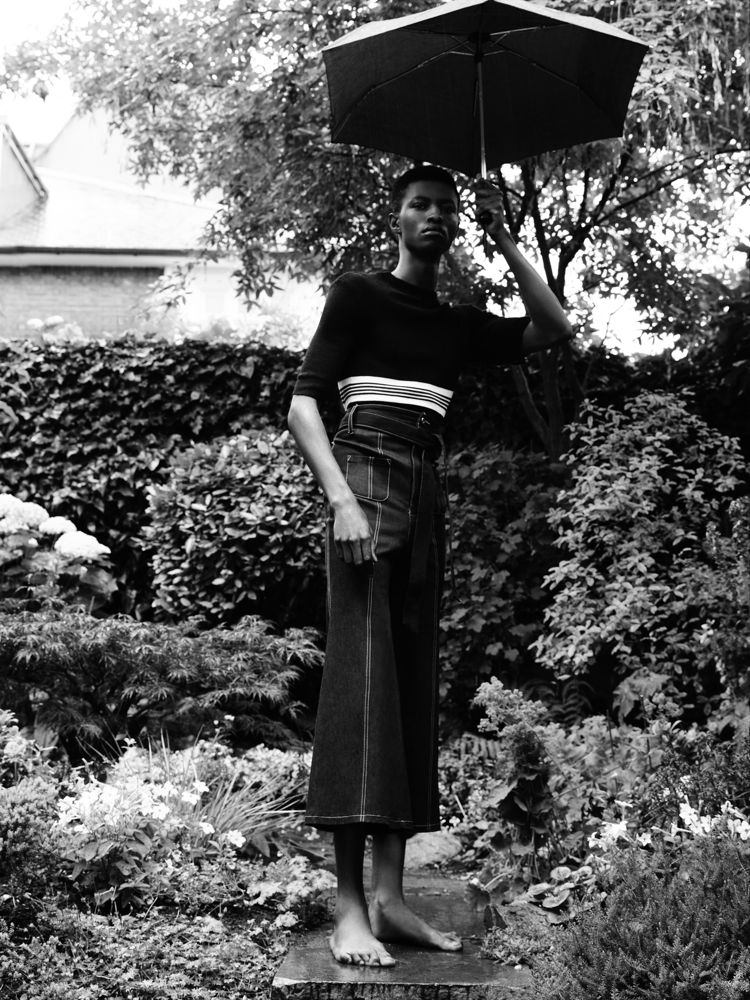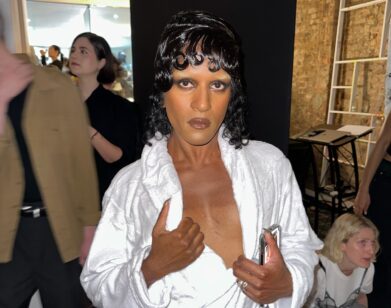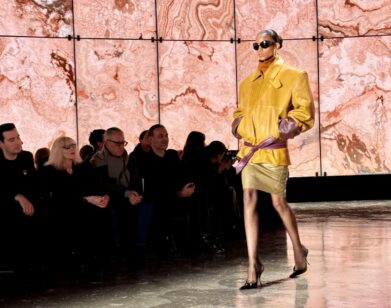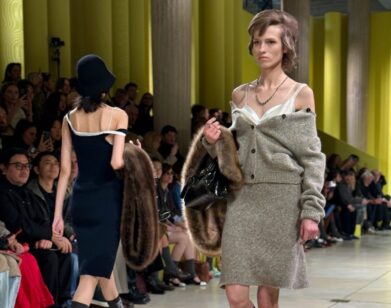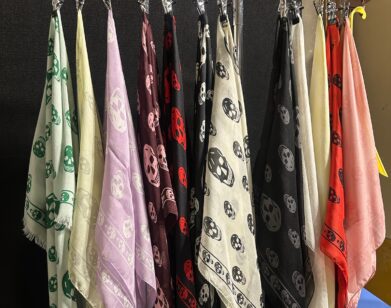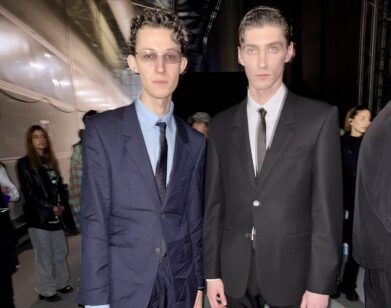Discovery: Wales Bonner
PHOTOS: RAF STAHELIN. STYLING: VICTORIA SEKRIER. GROOMING: DANIEL MARTIN/D AND V MANAGEMENT.
At just 24, Grace Wales Bonner is one of the most exciting voices in menswear today. Half Jamaican and raised in South London, Wales Bonner’s designs explore black heritage and the aesthetics of identity. Her inspirations are disparate—starting points for past collections include the 16th-century Ethiopian Malik Akbar (SS 2016), Ebonics (FW 2015), and French luxury in Lagos (SS 2015)—and span multiple mediums. Visit the Wales Bonner website and you’ll be greeted by a video the designer filmed while in Ghana of a lone man serenely fishing from a boat on Lake Bosumtwe. Her Instagram feed is interspersed with vintage images and snapshots of the collages she makes while researching a new collection. A Wales Bonner Souncloud features tracks reposted from the likes of Ghanan singer Mr. Eazi, Malaysian musician Yuna, and American rapper Tink.
It didn’t take long for people to notice the Central Saint Martins graduate’s designs; after making her London Fashion Week debut with Fashion East, she was invited to exhibit her collections at the V&A as part of the Fashion in Motion series. Her stockists include fashion forward boutiques and concept stores like Opening Ceremony and VFiles in the U.S., Joyce in Hong Kong, and LN-CC in London.
AGE: 24
HOMETOWN: South London. I’ve lived between Dulwich and Stockwell my whole life.
CURRENT LOCATION: East London
ALMA MATER: Central Saint Martins
GROWING UP… I was interested in visual culture: what things look like and how you can represent who you are with your clothes, but more related to identity and cultural trends. It was more about being interested in other people’s style as opposed to myself and exploring that.
MENSWEAR VS. WOMENSWEAR: When I started doing menswear, I found it clicked more for me. I was able to have a bit of distance from what I was doing and project bigger ideas onto men. It was less personal in a way, and it was more of an experiment. The male subject is such a discussed topic that it becomes a conversation; there is more scope for it to be discussed.
STARTING A NEW COLLECTION: It’s more about a mood, which often I get from reading literature. Before anything, I’ll start reading. Then I’ll start building a picture through really key images. From that point, the world becomes a bit more solid and I think about the sounds associated with that world, the textures, the colors. The image is the foundation and things build around it. At some point it all starts coming together and grows from a wide point into something quite specific. I try to make a narrative between these different visual things or sounds to create something that is unique.
At the start, it’s quite personal. I will keep it to myself and keep thinking—keep picking over the ideas. Once I’ve got a pretty strong idea about things, I’ll have conversations with a few people that I really trust, like my friend George who does the casting for me. It won’t be visual, it’ll be very much talking about the idea. I’ll probably do the same with Tom Guinness, who works on styling for the show. Naturally they’ll bring up things and it becomes slightly more open. I’ll bring in key people. I’ll talk to the sound person and I’ll be developing something with them, or I’ll be talking to set designers. It’s quite an open conversation once I’ve got the idea down.
DREAM COLLABORATORS: I recently shot in Senegal with Harley Weir, which was really amazing, but also someone like Isaac Julien or Steve McQueen—people doing black cinema that I think are really cool. I’d love to work towards something like that.
EXHIBITING AT THE V&A: The curator of the fashion program at the V&A came to my first show at London Fashion Week, which was with Fashion East. She saw the collection and then invited me to come do a show at the V&A. I guess it was just one person that saw it, really liked it, and thought it was important for it to be in the gallery. It was really about one person pushing for it to happen.
SPRING/SUMMER 2016: An exhibition I saw in Harlem a couple of years ago was the inspiration; it was basically about Africans in India in and around the 16th century. The particular character that stood out to me was Malik Ambar. He was an Ethiopian ex-slave that then became kind of a ruler in West India. He was an architect and had a massive empire, and it was about this character and his journey and his transition in terms of status, and also thinking about the kind of mirroring that you see between Indian and African cultures. Because I’d come back from Senegal, I was noticing contemporary mirroring as well in the cross-over in terms of music and filmreferences that are explored in different ways but have a running thread through them. It was quite a broad idea, and I was approaching the research not specific to times. It was about the connection between these two places.
FAVORITE PLACE: I would say Senegal is the most amazing place I’ve ever been. I went to Dakar. I love Ghana, but Senegal is so beautiful and kind of intoxicating how in sync everything seems to be and the sounds. The people are really beautiful and elegant and style was quite a big thing. The people were very sophisticated and it was really interesting to see that. It was interesting the French mix; there are parts of it that feel like Paris. But I really want to go to Ethiopia.
CURRENTLY… I’m working on production for the season that I’ve just showed. I’ve taken on quite a few new stockists this season, which is really exciting, so it’s about making sure that that relationship goes well and that everything that’s going to stores is where I want it to be and what I want it to be. I haven’t started next season yet, but I’ve got some ideas in my head. I’m taking some time to research and think.
FOR MORE ON WALES BONNER, VISIT THE LABEL’S WEBSITE.

